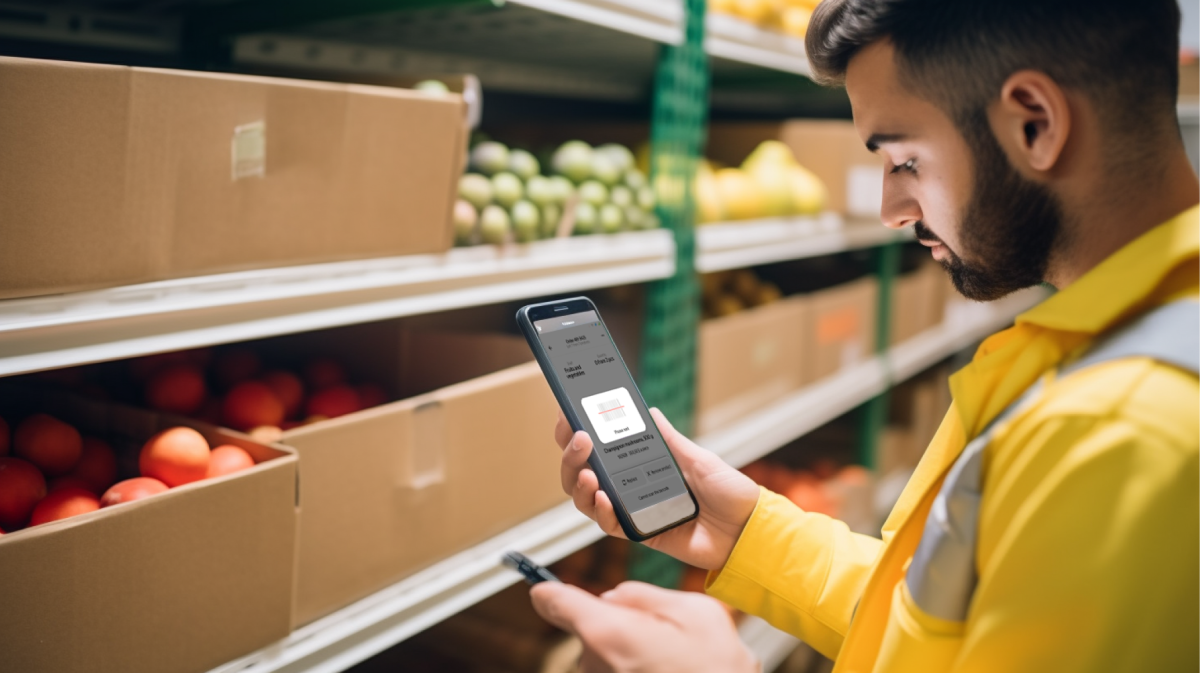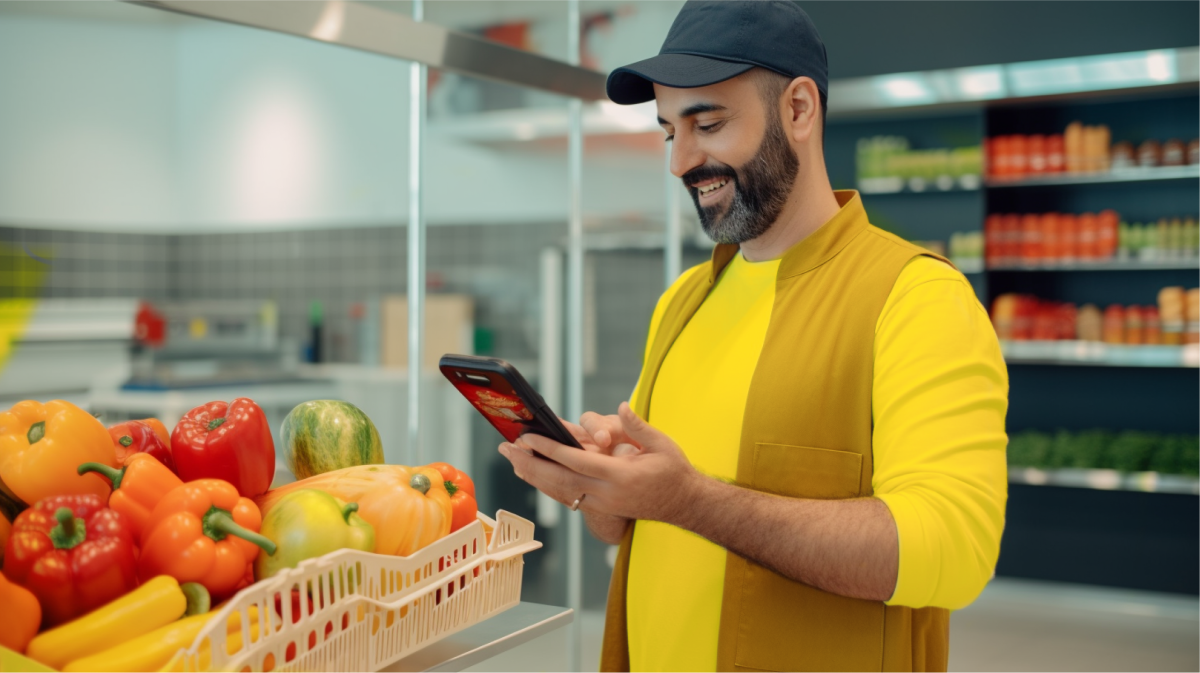Yango Tech and Surtifamiliar Partner for Next-Generation AI-Powered Grocery E-commerce in Colombia


AI technology is reshaping the way supermarkets operate, enhancing customer experiences, streamlining operations, and increasing profitability. With applications ranging from predictive demand forecasting to automated checkout systems, AI empowers grocery retailers to meet changing consumer demands and optimize their processes. This article explores how AI, especially machine learning (ML), is transforming the grocery sector and provides actionable insights for deploying AI effectively.
AI in the grocery sector refers to a range of technologies that use data to automate and enhance various aspects of retail operations, from inventory management to personalized customer engagement. By analyzing vast data sets, AI can predict consumer demand, manage supply chains, and personalize shopping experiences.
The global AI in retail market is currently experiencing rapid growth, with projections showing a compound annual growth rate (CAGR) of 33% from 2021 to 2026. This growth is driven largely by the increasing need for automation and customer-centric solutions across the retail industry, with grocery retail as a key sector. In an era where digital transformation is reshaping businesses, many grocery stores are adopting AI to stay competitive, reduce operational costs, and better align with customer expectations. This rise highlights the value that grocers place on AI's potential to drive efficiency and profitability.
In 2023, more than 60% of retailers indicated plans to increase their investments in AI, with a primary focus on enhancing the customer experience and boosting operational efficiency. For grocery retailers, AI solutions like personalized recommendations, stock optimization, and automated customer support provide a meaningful way to improve shopper satisfaction and increase loyalty. By reducing stockouts and optimizing product availability, AI-enabled grocery stores have already reported a 30% reduction in out-of-stock items, creating a smoother shopping experience and fostering trust with consumers. Additionally, this improvement in product availability correlates with a 5% increase in overall product accessibility, providing retailers a clear path to meet consumer demand effectively.

Machine learning (ML), a core branch of AI, processes data to enable predictive analytics, automate processes, and create tailored customer experiences. In grocery retail, ML plays an essential role in analyzing consumer behavior, predicting demand, and managing inventory with precision.
ML algorithms are revolutionizing customer interactions by analyzing data on individual preferences, behaviors, and buying patterns. This allows grocery retailers to offer tailored recommendations that can increase engagement and encourage higher purchase rates. For instance, grocers use customer transaction histories to suggest products, fostering a more personalized shopping experience. Inventory prediction is another crucial application, where ML models accurately forecast demand based on past data and current trends ([Oracle], reducing the likelihood of overstocking and understocking, leading to less waste and better product availability.
Additionally, ML algorithms are enhancing fraud detection and checkout processes, especially in stores with automated checkout systems. Computer vision and pattern recognition allow these systems to verify transactions, reducing human error and preventing potential fraud at self-checkout stations. This automation improves both customer experience and store security, as shoppers can check out more quickly without compromising transaction accuracy. Overall, ML is essential for modern grocery retail as it contributes directly to more efficient operations, heightened security, and stronger customer engagement.
Demand forecasting driven by machine learning has shown significant advantages for grocery retailers, often reducing inventory costs by up to 25%. Accurate demand predictions ensure that products are on hand without risking waste, aligning stock levels with consumer behavior. This data-driven approach helps grocery retailers maintain optimal stock levels, which is especially crucial for perishable items. By implementing ML models for inventory predictions, grocers are not only cutting costs but also ensuring that customers find what they need on the shelves—a key factor in building consumer trust.
Personalization through ML has also demonstrated substantial value for retailers, with 40% reporting that personalized recommendations enhance customer loyalty. By tailoring experiences to individual shoppers, stores see higher engagement rates and increased purchase volumes. In addition, operational efficiency receives a notable boost through ML, with over 45% of retail leaders stating that machine learning helps streamline operations and improve customer interactions. These statistics underscore ML's powerful impact on profitability and customer satisfaction, positioning it as an essential tool in the competitive grocery retail market.

AI in grocery retail encompasses a variety of technologies beyond ML, including natural language processing (NLP) and computer vision. Each plays a unique role in optimizing operations and enhancing customer experiences.
AI-based checkout systems can cut customer wait times by up to 70%, providing a major enhancement to the shopping experience. This speed boost is essential in grocery retail, where quick and efficient service is often a top priority for consumers. By implementing AI-powered computer vision solutions, stores can streamline the checkout process, reducing friction and creating a more seamless experience for shoppers. Additionally, AI’s ability to analyze store traffic patterns allows grocery retailers to optimize store layouts and product placements, improving customer flow and reducing bottlenecks.
Operational efficiency also improves significantly with AI technology, with a reported 10-15% increase in efficiency among retailers adopting these tools (Statista), automating time-consuming tasks such as restocking shelves and scheduling staff, contributing to a more productive store environment. AI-driven personalization further amplifies customer engagement, as studies have shown a 20% increase in average purchase value among customers who receive personalized recommendations (Yango Tech insights). This level of engagement strengthens customer loyalty and boosts overall sales, affirming the critical role AI plays in today’s grocery retail landscape.
Find more about Yango Tech's computer vision through: AI Shelf Monitoring
AI and ML applications are creating a competitive advantage for grocery retailers by improving inventory management, workforce planning, and checkout solutions.
Key applications in 2024 include:
Accurate inventory management, driven by AI and ML, has been found to increase inventory accuracy to as high as 99.9% (Yango Tech insights). For grocers, this level of accuracy is transformative, as it minimizes stockouts, ensuring customers can consistently find the items they need. Effective inventory management also reduces spoilage and waste, which is especially vital in grocery stores, where perishable goods make up a large portion of stock. With AI, grocers can confidently order stock based on predictive analytics, saving both time and money while improving the customer experience.
Labor efficiency, particularly through AI-assisted shift planning, has shown a 20% improvement in alignment with customer flow data (Yango Tech insights). By analyzing peak hours, stores can assign more staff when demand is high and reduce coverage during slower periods, optimizing labor costs and ensuring customers receive prompt assistance. AI-powered self-checkout systems contribute further as they are designed to recognize items and detect irregularities, creating a secure and swift checkout experience. Together, these efficiencies add up to notable savings and customer satisfaction for grocery retailers adopting AI.
Implementing AI in a grocery store requires a thoughtful approach, starting with evaluating current technology, setting goals, and choosing the right tools. Here’s a step-by-step guide to deploying AI effectively:
By adopting AI and ML solutions, grocery retailers can harness data-driven insights to enhance operational efficiency, elevate the customer experience, and ultimately boost profitability. AI is more than a trend; it’s an essential tool for grocers aiming to meet modern consumer demands and maintain a competitive edge in the rapidly evolving retail landscape.